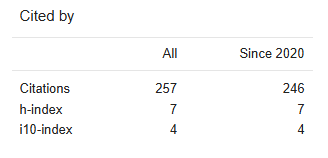Paper Details


Call For Papers
Volume 06, Issue 12
Frequency: 12 Issue per year
Paper Submission: Throughout the Month
Acceptance Notification: Within 2 days
Areas Covered: Multidisciplinary
Accepted Language: Multiple Languages
Journal Type: Online (e-Journal)
Announcement

Publish books with ISBN Number
- Edited Book
- Text Book
- Ph.D Thesis
- Conference Proceedings
ISSN Number:
2582-8568
Journal DOI No:
03.2021-11278686
Title:
Discovering Delhi Sultanate: Blend of Cultures and Architectural Wonders
Authors:
Cite this Article:
,
Discovering Delhi Sultanate: Blend of Cultures and Architectural Wonders, International Research Journal of Humanities and Interdisciplinary Studies (www.irjhis.com), ISSN : 2582-8568, Volume: 5, Issue: 4, Year: April 2024, Page No : 77-81,
Available at : http://irjhis.com/paper/IRJHIS2404009.pdf
Abstract:
The Delhi Sultanate, crossing the 13th to 16th centuries, could be a significant period in Indian history, characterized by critical social and engineering commitments. This period saw energetic syncretism, blending Persian, Turkish, Afghan, and Indian conventions to create an unmistakable Indo-Islamic character. Socially, Persian got to be the dialect of organization and writing, whereas intelligence between Islam and Hinduism shaped religious dynamics. Structurally, the Sultanate presented Indo-Islamic styles, apparent in points of interest just like the Qutub Minar and Jama Masjid, displaying complex plans and urban arranging advancements. Considering the Delhi Sultanate, it uncovers the combination of societies, mechanical headways, and imaginative accomplishments, giving experiences into devout coexistence and urban advancement. Hence, the Sultanate developed as a basic period where assorted impacts merged, forming the socio-cultural and building scene of medieval India.
Keywords:
religious dynamics, urban advancement, Qutub Minar, Indo-Islamic
Publication Details:
Published Paper ID: IRJHIS2404009
Registration ID: 21379
Published In: Volume: 5, Issue: 4, Year: April 2024
Page No: 77-81
ISSN Number: 2582-8568
Download Full Paper: Click Here
Article Preview:





